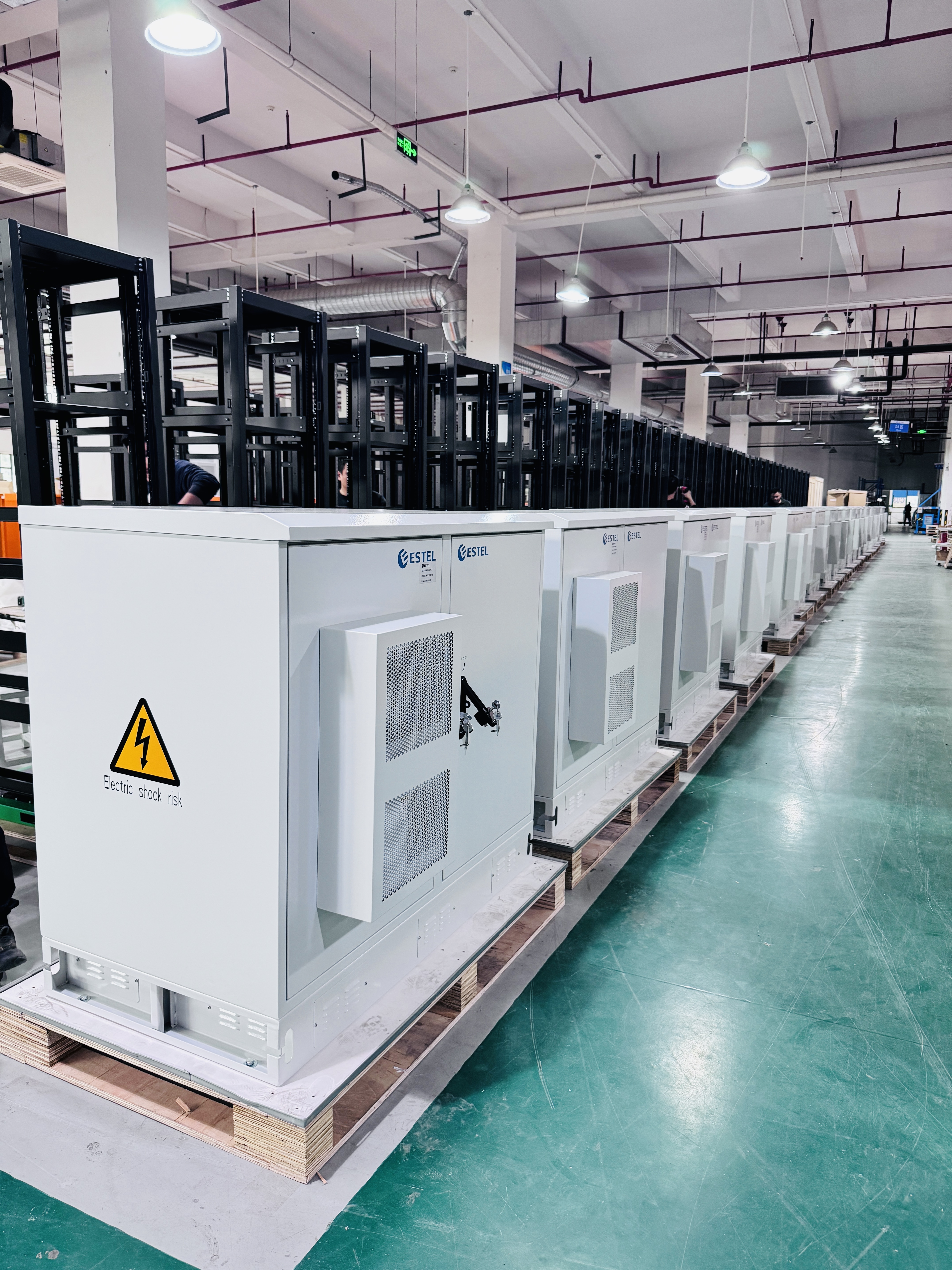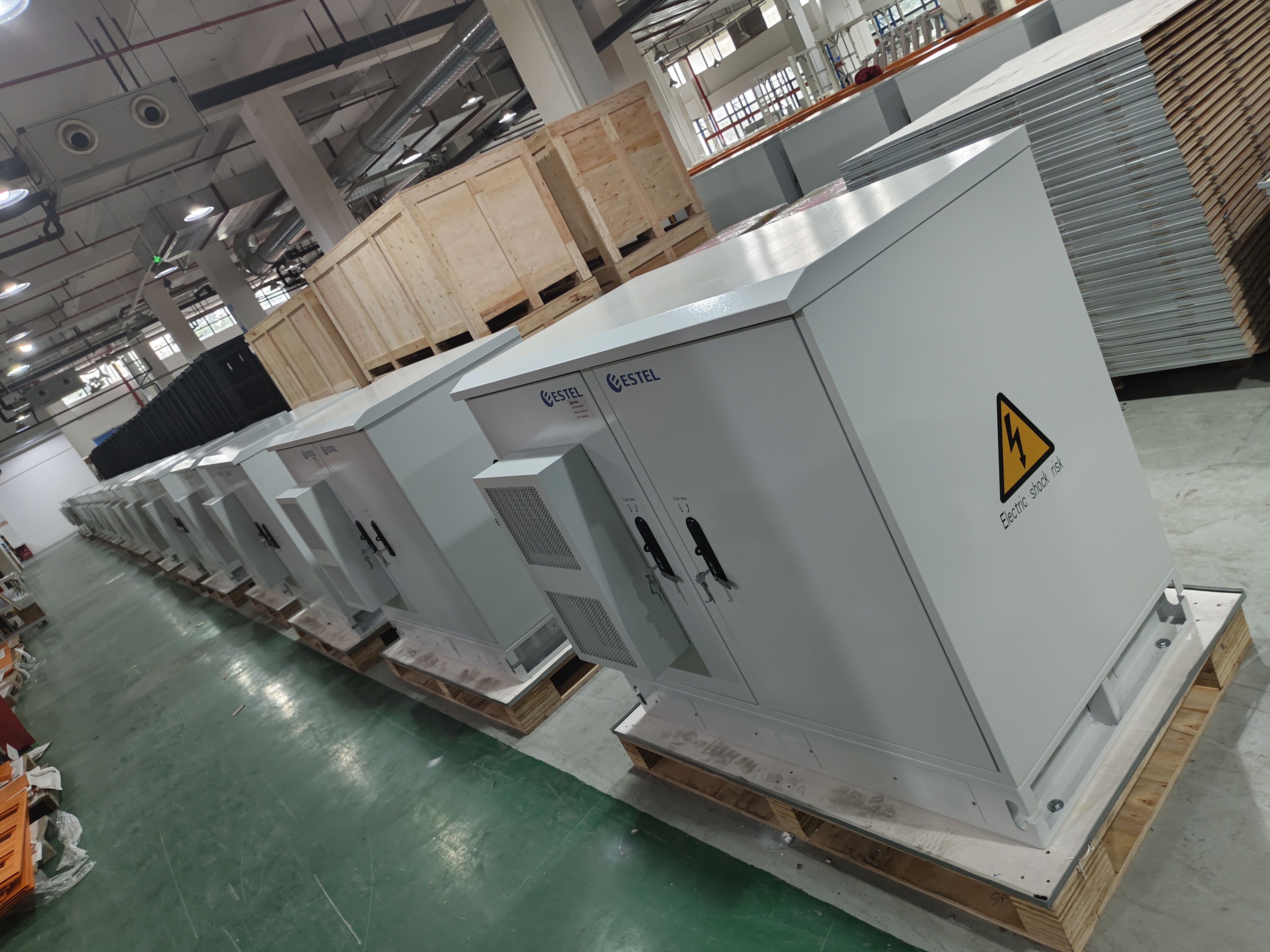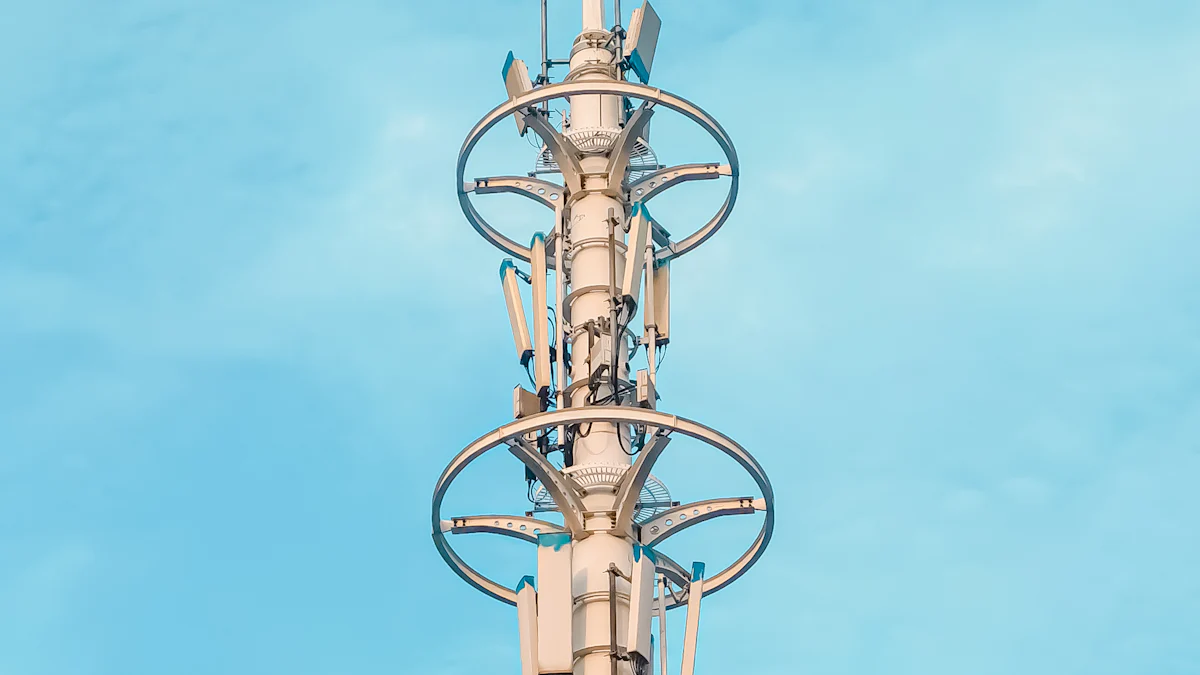How to Ensure Optimal Monitoring for Outdoor Telecom Cabinets

Outdoor telecom cabinets play a critical role in modern communication networks. I’ve seen how essential it is to have a reliable monitoring system to ensure their security and performance. These cabinets face harsh environmental challenges, including intense sun, rain, snow, and wind. Without proper protection, sensitive equipment inside can fail. Materials like galvanized steel and aluminum offer excellent weather resistance, while UV-resistant coatings help maintain durability and appearance over time.
Temperature regulation is another key factor. Effective cooling systems prevent overheating, ensuring equipment longevity. By investing in advanced solutions like 通信机柜的监控系统, we can safeguard these cabinets, protect investments, and maintain uninterrupted service.
Key Takeaways
Use strong materials like coated steel or aluminum for cabinets. These materials stop rust and shield equipment from bad weather.
Add good cooling systems to avoid overheating. This keeps equipment working well and lasting longer in hot or cold weather.
Include safety features like special locks and cameras. These help stop break-ins and damage to the cabinets.
Set up systems to watch power and weather conditions live. Alerts for power loss or heat changes can stop big problems.
Do regular check-ups and train workers often. These steps keep systems running well and help teams fix issues quickly.
Key Features of Outdoor Telecom Cabinets

Durability and Environmental Resistance
Importance of weatherproof and corrosion-resistant materials
I’ve always believed that durability is the backbone of any outdoor telecom cabinet. Materials like galvanized steel and aluminum naturally resist rust, making them ideal for harsh environments. Composite materials also stand out for their inherent corrosion protection. Regular maintenance and protective coatings further enhance resistance, ensuring long-term reliability.
Here’s a quick comparison of materials often used:
Material | Advantages | Considerations |
|---|---|---|
Fiberglass Reinforced Plastic | Lightweight, corrosion-resistant, good insulation | May not be as strong as metal alternatives |
Polycarbonate | Lightweight, impact-resistant, good transparency | May not be as robust as metal options |
Galvanized Steel | Good corrosion resistance, cost-effective | May require additional coating |
Composite Materials | Customizable for specific requirements | Cost and availability may be factors |
Protection against extreme temperatures, humidity, and dust
Outdoor environments can be unforgiving. I’ve seen how extreme temperatures, high humidity, and dust can wreak havoc on sensitive equipment. That’s why cabinets with IP55 protection ratings are essential. They shield equipment from moisture and dust while maintaining optimal internal conditions. Double-wall designs with heat insulation and advanced cooling systems, like DC fans or air conditioning units, ensure stable temperatures even in challenging climates.
Security and Anti-Vandalism Systems
Anti-theft locking mechanisms and tamper-proof designs
Security is non-negotiable when it comes to outdoor telecom cabinets. I’ve found that anti-theft locking mechanisms, such as three-point locks, provide robust protection against unauthorized access. Tamper-proof designs, reinforced doors, and sturdy aluminum enclosures add another layer of security. These features ensure that equipment remains safe from theft or damage.
Integration with "anti-vandalism systems" for enhanced security
I’ve noticed that integrating anti-vandalism systems significantly boosts security. These systems include motion sensors, alarm systems, and intrusion detection mechanisms that alert operators to tampering attempts. Cabinets built with impact-resistant materials can withstand physical attacks, while surveillance cameras enable real-time monitoring. Special coatings that repel graffiti and strategic placement in well-lit areas further deter vandalism.
Power Management and Backup Systems
Backup power systems and surge protection
Power reliability is critical for telecom operations. I’ve seen how backup power systems, such as batteries or generators, ensure uninterrupted service during outages. Surge protection is equally important, as it shields equipment from voltage spikes caused by lightning or power fluctuations. These features protect both the equipment and the network’s reliability.
Efficient energy usage to support long-term operations
Energy efficiency is a game-changer for long-term operations. Cabinets with advanced power management systems optimize energy usage, reducing operational costs. Features like intelligent cooling systems and energy-efficient components help maintain performance while minimizing power consumption. This balance ensures sustainable and cost-effective operations over time.
Essential Components of a Monitoring System

Power System Monitoring
Tracking power supply, battery health, and backup systems
I’ve learned that constant monitoring of cabinets begins with a robust power system. Tracking the power supply ensures that equipment operates without interruptions. Monitoring battery health is equally important, as it helps identify when replacements are needed. Backup systems, such as uninterruptible power supplies (UPS), provide critical support during outages. I always recommend including cooling systems, power distribution units (PDUs), and UPS in any monitoring setup. These components work together to maintain stable operations and prevent costly downtime.
Alerts for power outages or low battery levels
Real-time alerts are essential for effective power system monitoring. I’ve seen how notifications for power outages or low battery levels can prevent service disruptions. For instance, temperature monitoring ensures cooling systems function properly, while water detection sensors identify leaks that could damage equipment. These alerts allow operators to respond quickly, minimizing risks and maintaining network reliability.
Environmental Monitoring for Telecom Cabinets
Sensors for temperature, humidity, and air quality
Environmental monitoring plays a vital role in protecting telecom equipment. I’ve found that sensors for temperature, humidity, and air quality provide valuable status data. Temperature sensors ensure that cooling systems maintain optimal conditions. Humidity sensors prevent static electricity and condensation, which can harm sensitive components. Water leak detection sensors are also critical, as they identify potential flooding risks.
Sensor Type | Function |
|---|---|
Temperature Sensor | Monitors internal temperature to ensure proper functioning of air conditioning and equipment. |
Humidity Sensor | Detects humidity levels to prevent static electricity and condensation issues. |
Water Leak Detection Sensor | Identifies leaks from air conditioning or other sources to prevent water damage. |
Door Open Sensor | Alerts for unauthorized access by detecting door openings. |
Smoke Sensor | Detects smoke or fire, sending alarms to monitoring centers. |
Real-time alerts for environmental changes
I’ve noticed that real-time alerts for environmental changes are invaluable. These notifications allow operators to address issues like overheating or water leaks before they escalate. For example, smoke sensors send alarms in case of fire, ensuring quick action to protect equipment. This proactive approach minimizes risks and ensures the longevity of telecom cabinets.
Access Control and Security Monitoring
Role of access logs and remote access control
Access control is a cornerstone of any monitoring system. I’ve seen how access logs help track who enters and exits a cabinet. Remote access control adds another layer of security, allowing operators to manage permissions without being on-site. This feature reduces the need for physical interventions and enhances operational efficiency.
Integration with alarms and surveillance systems
Integrating access control with alarms and surveillance systems offers multiple advantages. Intrusion protection detects and tracks unauthorized access in real-time. Surveillance cameras improve compliance and safety by monitoring activities around the cabinet. This integration also optimizes maintenance planning, reducing the need for on-site staff. I always recommend this setup for its ability to enhance both security and operational efficiency.
Alarm and Notification Systems
Types of alarms: visual, audible, and remote notifications
I’ve always found that having multiple types of alarms in outdoor telecom cabinets ensures quick responses to potential issues. Visual alarms, like flashing lights, provide immediate on-site alerts. These are especially useful in areas where operators frequently visit. Audible alarms, such as sirens or beeps, grab attention instantly. They work well in noisy environments where visual signals might go unnoticed.
Remote notifications, however, are my favorite. They allow operators to monitor cabinets from anywhere. These notifications can be sent via SMS, email, or mobile apps. For example, if a cabinet experiences a power failure, the system sends an alert directly to the operator’s device. This feature saves time and ensures that problems are addressed promptly. Combining these alarm types creates a comprehensive detection and alarm system that enhances overall efficiency.
Importance of customizable alert thresholds
Customizable alert thresholds play a crucial role in effective monitoring. I’ve seen how setting specific thresholds for temperature, humidity, or power levels helps prevent false alarms. For instance, a cabinet in a hot climate might need a higher temperature threshold than one in a cooler region.
Operators can adjust these thresholds based on environmental conditions and equipment requirements. This flexibility ensures that alarms trigger only when necessary. It reduces unnecessary interventions and allows teams to focus on critical issues. Customizable thresholds also improve the accuracy of detection and alarm systems, making them more reliable for long-term operations.
Tip: Always review and update alert thresholds regularly to match changing conditions or equipment upgrades.
Choosing the Right Monitoring System for Telecom Cabinets
Compatibility with Existing Infrastructure
Ensuring seamless integration with current systems
I’ve learned that ensuring compatibility with existing infrastructure is critical when selecting cell site monitoring solutions. A seamless integration process avoids disruptions and ensures that all components work together efficiently. To achieve this, I always start by understanding the specific requirements of the monitoring system. For example, knowing the areas of application and the technologies already in use helps avoid unnecessary complications.
Here’s a quick breakdown of factors to consider:
Factor | Description |
|---|---|
Requirements | Understand the specific needs for the monitoring system, including the areas of application. |
Technical Must-Haves | Ensure support for common protocols and technologies to accommodate heterogeneous networks. |
Network Size and Scenarios | Consider the size of the network and the specific scenarios that need monitoring. |
Avoiding compatibility issues with legacy equipment
Legacy equipment often poses challenges during integration. I’ve seen how older systems may lack support for modern protocols or technologies. To address this, I recommend choosing monitoring systems that support a wide range of protocols. This ensures that even older equipment can communicate effectively with the new system. Testing the compatibility of all components before deployment also minimizes risks.
Scalability and Future Growth
Importance of choosing a system that can grow with your network
Telecom networks constantly evolve. I’ve found that selecting a scalable monitoring system is essential for supporting future growth. Regular assessments of network utilization help identify bottlenecks early. Leveraging AI and automation enhances adaptability, making it easier to manage expanding networks. Cloud-native architectures also simplify scalability, aligning the system with organizational growth.
Modular designs for easy upgrades
Modular designs make upgrades straightforward. I’ve seen how these designs allow operators to add new features or expand capacity without overhauling the entire system. This flexibility ensures that the monitoring system remains relevant as the network grows. It also reduces costs associated with large-scale replacements.
Reliability and Redundancy in Monitoring
Features to ensure continuous operation during failures
Reliability is non-negotiable in cell site monitoring. I always look for features like effective cooling systems and robust locking mechanisms. These ensure that equipment operates smoothly even in challenging conditions. Compliance with industry standards also guarantees safety and performance reliability.
Importance of redundant systems for critical operations
Redundancy is a cornerstone of reliability. I’ve seen how redundant systems, such as backup power supplies and duplicate monitoring components, prevent downtime during failures. For example, temperature control systems with dual cooling units ensure uninterrupted operation. This approach safeguards critical operations and enhances overall system reliability.
Tip: Always prioritize systems with built-in redundancy to minimize risks and maintain consistent performance.
Evaluating Cost vs. Value
Balancing upfront costs with long-term benefits
I’ve learned that balancing the initial investment with long-term advantages is crucial when selecting monitoring systems for outdoor telecom cabinets. While it might be tempting to choose a low-cost option, I’ve seen how cheaper systems often lack durability or essential features. Over time, these shortcomings lead to higher maintenance costs and frequent replacements.
Investing in a high-quality system upfront ensures better performance and reliability. For example, advanced systems with robust environmental sensors and efficient power management reduce the risk of equipment failure. This minimizes downtime and repair expenses. Additionally, features like real-time alerts and remote access save time and resources by allowing operators to address issues quickly.
I always recommend evaluating the total cost of ownership (TCO). This includes not just the purchase price but also installation, maintenance, and operational costs. A well-designed system may cost more initially but often pays for itself through reduced operational expenses and extended equipment lifespan.
Evaluating ROI for monitoring system investments
Calculating the return on investment (ROI) helps determine the value of a monitoring system. I’ve found that systems offering features like backup power monitoring and environmental alerts provide significant savings. For instance, preventing a single equipment failure can save thousands of dollars in repairs and lost revenue.
To evaluate ROI, I consider factors like improved network uptime, reduced maintenance costs, and enhanced security. Systems with modular designs and scalability also add value by supporting future growth without requiring a complete overhaul. By focusing on these aspects, I ensure that the chosen system delivers maximum value over its lifetime.
Tip: Always prioritize systems that align with your operational needs and offer measurable long-term benefits.
Best Practices for Maintenance and Monitoring
Regular Audits and Inspections
Importance of scheduled maintenance checks
I’ve always believed that regular maintenance checks are the foundation of a reliable telecom cabinet system. Scheduled inspections ensure that every component functions as intended. During these checks, I focus on cleaning the cabinet to prevent dust and debris from accumulating. I also inspect the fan box, LEDs on the boards, and the condition of power cables. These steps help identify potential issues before they escalate.
Identifying and addressing potential issues early
Early detection of problems saves time and money. I’ve seen how monitoring voltage levels in Power Distribution Units (PDUs) and testing battery connections can prevent unexpected failures. Checking the integrity of GND cables and measuring earth resistance ensures safety and performance. I also monitor environmental alarms, humidity levels, and air conditioning performance. These inspections keep the system running smoothly and extend the lifespan of the equipment.
Staff Training and Awareness
Training personnel to use monitoring systems effectively
I’ve learned that well-trained staff are essential for effective monitoring. Training sessions should cover the operation of monitoring systems, including how to interpret alerts and respond to them. I always emphasize hands-on practice with the equipment. This approach builds confidence and ensures that team members can handle real-world scenarios.
Importance of cybersecurity awareness for remote access
Cybersecurity awareness is just as important as technical training. I’ve seen how remote access can expose systems to potential breaches. Teaching staff about secure login practices and the risks of phishing attacks helps protect sensitive data. Regular updates on the latest cybersecurity threats keep everyone informed and prepared.
Emergency Protocols and Disaster Recovery
Establishing clear procedures for system failures or breaches
I’ve found that having clear emergency protocols minimizes downtime during crises. These procedures should outline steps for addressing system failures, such as power outages or environmental alarms. I always recommend assigning specific roles to team members to ensure a coordinated response.
Importance of backup plans and disaster recovery strategies
Backup plans are critical for disaster recovery. I’ve seen how redundant systems, like secondary power supplies, keep operations running during failures. Regularly testing these backups ensures they work when needed. A comprehensive disaster recovery strategy includes restoring data, repairing damaged equipment, and resuming normal operations quickly. This preparation safeguards the network and reduces the impact of unexpected events.
Tip: Regularly review and update emergency protocols to adapt to new challenges and technologies.
Selecting a durable and secure monitoring system for outdoor telecom cabinets ensures long-term reliability. I’ve seen how advanced systems with energy-saving features, like passive cooling and low-power electronics, reduce operational costs. Remote monitoring capabilities also allow real-time tracking, improving efficiency and minimizing downtime.
Regular maintenance and staff training are equally important. These practices keep systems running smoothly and help teams respond effectively to issues. I always recommend evaluating specific needs and consulting experts. This approach ensures the chosen system aligns with operational goals and delivers maximum value over time.
FAQ
What is the role of RTUs in telecom sites?
RTUs, or remote telemetry units, collect and transmit data from telecom sites to central systems. I’ve seen how they enable real-time monitoring of power, temperature, and security. This ensures quick responses to issues, improving network reliability and availability.
How does environmental monitoring protect telecom sites?
Environmental monitoring uses sensors to track temperature, humidity, and air quality. I’ve found that it prevents equipment damage by detecting harmful conditions early. This proactive approach ensures the availability of telecom sites and extends the lifespan of critical infrastructure.
Why is network monitoring software essential for telecom sites?
Network monitoring software tracks performance, detects faults, and ensures smooth operations. I’ve noticed how it provides insights into network health, helping operators meet requirements for uptime and availability. This software is vital for maintaining reliable IT infrastructure.
How do high-security locks enhance telecom site protection?
High-security locks prevent unauthorized access to telecom sites. I’ve seen how they deter theft and vandalism, safeguarding critical infrastructure. Combining these locks with remote monitoring systems ensures comprehensive security.
What are the benefits of remote monitoring technology for telecom sites?
Remote monitoring technology allows operators to oversee telecom sites from anywhere. I’ve observed how it reduces the need for on-site visits, saving time and resources. It also ensures quick issue resolution, improving network availability and performance.
See Also
Tips for Maintaining Ideal Temperature in Telecom Cabinets
Selecting the Right Mount for Outdoor Telecom Cabinets
Essential Features for Durable Outdoor Telecom Cabinets
Assessing Materials for High-Quality Telecom Cabinets Outdoors
Safeguarding Equipment Using Outdoor Telecom Cabinets Effectively
CALL US DIRECTLY
86-13752765943
3A-8, SHUIWAN 1979 SQUARE (PHASE II), NO.111, TAIZI ROAD,SHUIWAN COMMUNITY, ZHAOSHANG STREET, NANSHAN DISTRICT, SHENZHEN, GUANGDONG, CHINA

